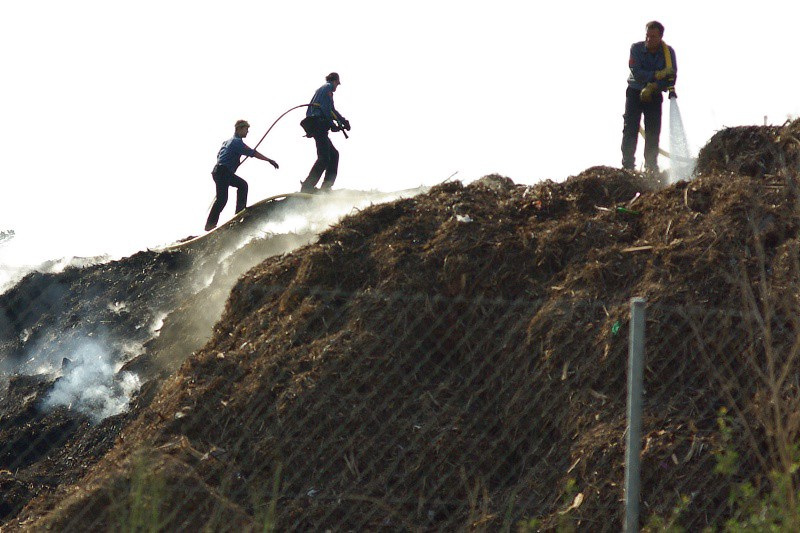Recycling Pollutants
Human and industrial waste are routinely used as fertilizer and mulch
Would it surprise you to learn that the fertilizer and mulch you are using in your garden and that your community is applying to its farms, golf courses and parks may be the solid component of human and industrial waste? Since 1993 the United States Environmental Protection Agency EPA has sanctioned the sale and use of the solid by-products of sewage treatment — “biosolids” or treated sewage sludge. MarketWatch reported that, worldwide, biosolids are now a $5740 million business. Biosolids are sold in many states as fertilizer, compost and mulch. They are also burned as fuel, deposited in landfills and applied when reclaiming land. Is this an effective recycling strategy or a government maneuver to profit from waste disposal by exposing an uninformed constituency to pollutants?
News articles published over the past decade establish that the EPA has conducted only limited monitoring of pollutants in biosolids for years. In 2008, Fox News online reported a consistent pattern of inadequate oversight for a six-year period. “A series of reports by the EPA’s inspector general and the National Academy of Sciences between 1996 and 2002 faulted the adequacy of the science behind the EPA’s 1993 regulations on sludge.”
Two years later, in 2010, the Huffington Post online reported, “EPA expert Hugh Kaufman warns that government regulation for Class A biosolids (the cleaner class) ignores 99 percent of the pollutants found in it.”(Richardson, 2010)
Eight years later, in November, 2018, Bloomberg online reported, “According to [a November 2018 report of the Inspector General], the risks of at least 352 pollutants found in biosolids haven’t been fully assessed by the EPA. And at least 61 of them have already been deemed hazardous by another federal agency or program.” Quoting Jill Trynosky of the Inspector General’s office, Bloomberg online further reported,
“The EPA is unable to state whether, and at what level, the pollutants found in biosolids pose a risk to human health or the environment.”
Notwithstanding the above news items, media reporting on biosolids has been somewhat limited. Consequently, despite the fact that in many states biosolids have been in use since 1993, many members of the community may still be unaware of this practice. This lack of awareness may be strategic, as whether or not the science established that the use of biosolids does not present health risks, community members may reflexively object to the idea.
As the risks associated with biosolids have not been fully explored, it is not possible to determine whether with appropriate scientific assurances people would be comfortable accepting such risks. However, news reports do indicate that people who have not been advised of health risks do object to this practice and that there has been limited efforts to apprise people regarding the potential for them to encounter biosolids.
For example, in 2008, Fox News online reported that in the late 1990s the federal government sponsored community-based studies to investigate the interaction of biosolids and lead. The story describes how biosolids were applied to lead-contaminated yards of homes in an economically depressed area of Baltimore. In St. Louis, biosolids were applied to a vacant lot adjacent to an elementary school attended by children of poor families. The Fox report indicates that in both instances, the families were not told that the fertilizer contained biosolids, nor were they advised that there were any safety concerns with the fertilizer. The report quotes sources indicating that communications to the community were crafted so as to avoid raising questions regarding the nature and safety of the product. (Fox News, 2008)
Similarly, in May 2010, the Huffington Post reported that residents of San Francisco lined up to receive the free organic compost offered by the city. Upon discovering that the compost was in fact biosolids, some residents angrily returned the compost by dumping it at Mayor Gavin Newsom’s office.
The ineffectiveness of the EPA in communicating what remains unexplored in relation to pollutants and biosolids might be inferred from statements by the Michigan Department of Environmental Quality in 2014. “Biosolids are one of the most studied materials that have ever been regulated by the U.S. Environmental Protection Agency. Decades of studies have demonstrated that biosolids can be safely used for the production of crops…the use of these materials…presents negligible risk to the consumer, to crop production and to the environment.”
There are also indications that the EPA has not fully addressed the scope of the problem in managing biosolids. In February, 2019, the Washington Post reported that as a result of heavy rainfall, sewage treatment plans through the Mid-Atlantic needed to store biosolids until the farmland to which they would ordinarily be applied dries. This storage need was prompting the utilities to consider building additional space on site to hold the biosolids, raising concerns about odor.
Disclosure that would enable people to choose to avoid biosolids where possible is generally limited.
There has been very limited reporting of the fact that that fertilizer and mulch made from biosolids may legitimately obtain a United States Department of Agriculture “organic” certification and that there is no requirement for companies to disclose that biosolids have been added to the product.
Counterintuitive to the decision to allow some fertilizer containing biosolids to be certified as organic, food certified as organic must not have been fertilized with products containing biosolids. Given the limited or lack of publication of this information by mainstream media, this information is unlikely to be widely known.
The EPA has sanctioned the application of biosolids to properties without fully investigating the risks. Neither the EPA nor the companies selling biosolids has made a clear effort to inform community members of the practice, the safety concerns, or the ways to avoid exposure to biosolids. As a result, community members have been given no meaningful ability to refuse to consent to this practice or to take affirmative steps to avoid coming in physical contact with products containing or treated with biosolids. The EPA’s actions with regard to biosolids do not engender the level of trust that one might expect to afford an agency with a self-described mission “to protect human health and the environment.”
Given the lack of research regarding contaminants and the lack of public awareness about the use of biosolids, the current approach to recycling biosolids is both ill-advised and unethical.











